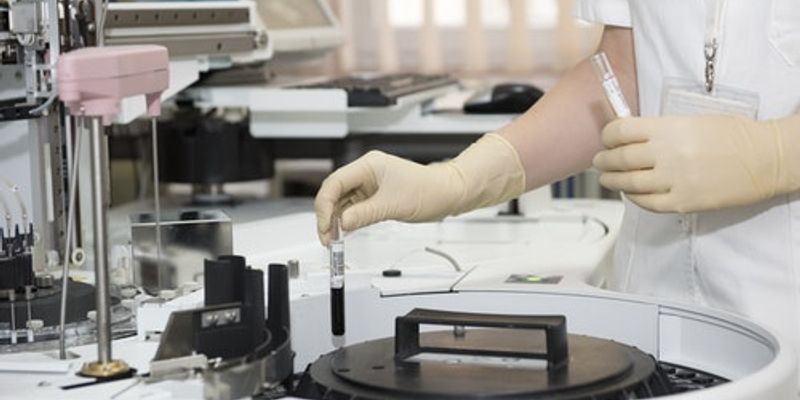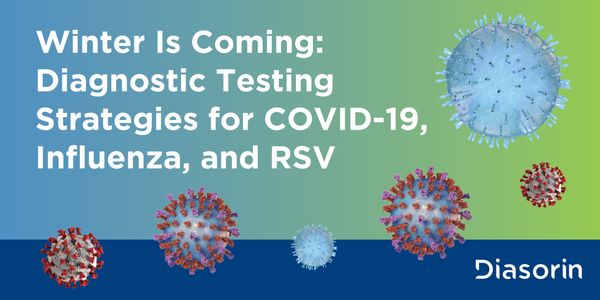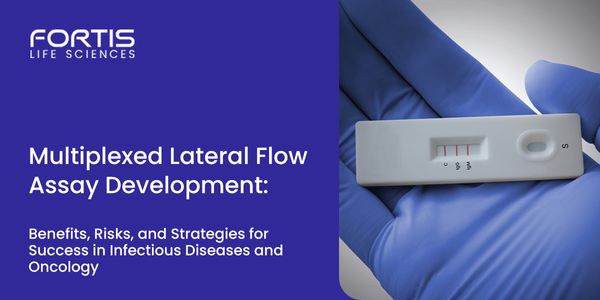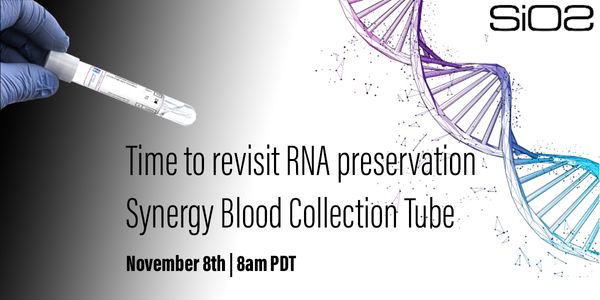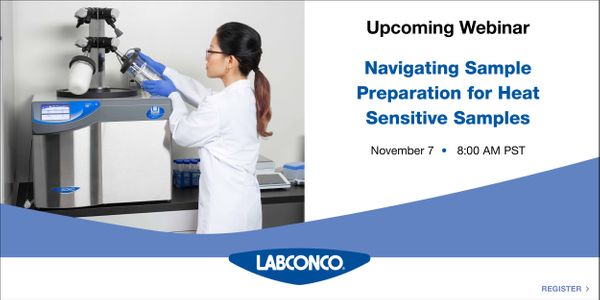Laboratory
Laboratory: is a facility that provides controlled conditions in which scientific or technological research, experiments, and measurement may be performed.
-
JAN 16, 2024 | 8:00 AMThe clinical interpretation of genetic testing results remains one of the most significant hurdles in effectively applying genomics in modern medicine. Errors in variant interpretation, whet...DECEMBER 14, 2023 2:00 PM ETIncrease your knowledge of the attributes to look for when choosing laboratory supplies (and stretch your budget in the process)....Speaker: Jim Duffey , John GuraDEC 14, 2023 | 10:00 AMC.E. CREDITSOver the course of the COVID-19 pandemic, there has been a dramatic increase in the number and type of diagnostic tests for respiratory viruses. These include targeted molecular assays, smal...DEC 13, 2023 | 9:00 AMThe quest for digital excellence in today’s biotech research laboratories demands modern software acquisition, robust protection protocols, and a keen eye on evolving security requirem...DEC 07, 2023 | 11:00 AMAbstract text Learning Objectives Webinars will be available for unlimited viewing after live event....DEC 07, 2023 | 10:00 AMC.E. CREDITSLateral flow assay applications have become increasingly diverse in a post-pandemic world, and the areas of infectious disease and oncology continue to be at the forefront. In both areas, th...DEC 07, 2023 | 8:00 AMAs the vast landscape of genetic oncology continues to expand, the ability to understand and utilize the full potential of this rich data becomes increasingly challenging. As a result, resea...DEC 06, 2023 | 8:00 AMChange in the lab is inevitable. Skilled labor shortages. Ongoing lab space consolidation and build-outs. Rapidly changing workflows and instrument layouts. Innovations in instrument technol...DEC 01, 2023 | 8:00 AMAccording to the most recent data from UNAIDS, in 2022, there were around 39 million people living with HIV worldwide. Of these, 5.5 million people were unaware of their diagnosis in 2021. M...DEC 01, 2023 | 6:00 AMC.E. CREDITSIn recognition of World AIDS Day, we invite you to discover the innovative work being done to help end the HIV epidemic in some of the hardest hit areas in India. A diagnosis is the first st...NOV 30, 2023 | 12:00 PMC.E. CREDITSPathology Perspective: Discover the critical need for genomic testing in cancer and explore the differences between traditional tissue biopsies and liquid genomic profiling. We'll dive i...Speaker: Dr. Shuko Harada , Dr. Aakash Desai, MBBS, MPHPresented at: Precision Medicine in Solid Tumors
NOV 29, 2023 | 9:00 AMTumor genomic profiling can be complicated, especially for diseases that commonly have multiple different genomic biomarkers of interest, such as non-small cell lung cancer (NSCLC) and color...NOV 16, 2023 | 8:00 AMabstract will go here...Speaker: Patrick Flanagan , Anthony Kammerich , Christina SorgenSponsored By: Waters CorporationNOV 16, 2023 | 8:00 AMC.E. CREDITSMyelodysplastic Syndrome (MDS) requires a complicated workup that can be supported by Artificial Intelligence (AI). Initial findings using AI have shown that MDS can be preliminarily identif...NOV 15, 2023 1:00 PM ETC.E. CREDITSSummary: Internal quality control is an integral process of laboratory testing. A clinical laboratory's coagulation quality control (QC) program is a critical component of its quality as...Speaker: LaShanta Brice, DCLS, MLS(ASCP)<sup>CM</sup>SH(ASCP)<sup>CMNOV 15, 2023 | 7:00 AMJoin Assoc. Prof. Dr. Alfonso Blanco, the Director of the Flow Cytometry Core Technologies in the University College Dublin for a review of what he looks for in new cytometry analyzers and s...NOV 14, 2023 | 9:00 PMSpheroids and organoids, two examples of 3D cell culture models, have become invaluable tools to study the processes that dictate behavior of tissues under physiological and pathological con...NOV 14, 2023 | 10:00 AMC.E. CREDITSAssessment for anti-dsDNA antibodies provides some of the most significant challenges in autoantibody serology testing. Anti-dsDNA antibodies are an important biomarker for systemic lupus er...NOV 14, 2023 | 9:00 AMEvery R&D company faces similar challenges when integrating lab instruments into a scientific process. Teams require accurate, usable instrument data, and as companies scale, they’...NOV 14, 2023 | 8:00 AMRNA-Seq remains a critical and robust methodology in understanding cellular and organismal changes associated with development and disease. Advances in automation have helped reduce the cost...NOV 14, 2023 | 6:00 AMC.E. CREDITSIt is over half a century since haemoglobin A1c (HbA1c) was recognised by medical professionals; the importance of HbA1c to the long term health of people with diabetes was clearly demonstra...NOV 09, 2023 | 8:00 AMC.E. CREDITSTissue microarray combines tens to hundreds paraffin-embedded specimens into a single paraffin block. It is a practical and highly effective tool for high-throughput analyses including valid...NOV 08, 2023 | 8:00 AMSiO2 Materials Science is a company with deep roots in materials science and engineering and a track record of innovative packaging products for pharmaceutical drugs. The company also manufa...NOV 07, 2023 | 8:00 AMThe proper preparation of heat sensitive samples is a critical aspect of laboratory work across various industries. Ensuring that samples maintain their integrity throughout the sample prepa...
JAN 16, 2024 | 8:00 AM
The clinical interpretation of genetic testing results remains one of the most significant hurdles in effectively applying genomics in modern medicine. Errors in variant interpretation, whet...
DECEMBER 14, 2023 2:00 PM ET
Increase your knowledge of the attributes to look for when choosing laboratory supplies (and stretch your budget in the process)....
Speaker:
Jim Duffey
, John Gura
DEC 14, 2023 | 10:00 AM
C.E. CREDITS
Over the course of the COVID-19 pandemic, there has been a dramatic increase in the number and type of diagnostic tests for respiratory viruses. These include targeted molecular assays, smal...
DEC 13, 2023 | 9:00 AM
The quest for digital excellence in today’s biotech research laboratories demands modern software acquisition, robust protection protocols, and a keen eye on evolving security requirem...
DEC 07, 2023 | 11:00 AM
Abstract text Learning Objectives Webinars will be available for unlimited viewing after live event....
DEC 07, 2023 | 10:00 AM
C.E. CREDITS
Lateral flow assay applications have become increasingly diverse in a post-pandemic world, and the areas of infectious disease and oncology continue to be at the forefront. In both areas, th...
DEC 07, 2023 | 8:00 AM
As the vast landscape of genetic oncology continues to expand, the ability to understand and utilize the full potential of this rich data becomes increasingly challenging. As a result, resea...
DEC 06, 2023 | 8:00 AM
Change in the lab is inevitable. Skilled labor shortages. Ongoing lab space consolidation and build-outs. Rapidly changing workflows and instrument layouts. Innovations in instrument technol...
DEC 01, 2023 | 8:00 AM
According to the most recent data from UNAIDS, in 2022, there were around 39 million people living with HIV worldwide. Of these, 5.5 million people were unaware of their diagnosis in 2021. M...
DEC 01, 2023 | 6:00 AM
C.E. CREDITS
In recognition of World AIDS Day, we invite you to discover the innovative work being done to help end the HIV epidemic in some of the hardest hit areas in India. A diagnosis is the first st...
NOV 30, 2023 | 12:00 PM
C.E. CREDITS
Pathology Perspective: Discover the critical need for genomic testing in cancer and explore the differences between traditional tissue biopsies and liquid genomic profiling. We'll dive i...
Speaker:
Dr. Shuko Harada
, Dr. Aakash Desai, MBBS, MPH
Presented at: Precision Medicine in Solid Tumors
NOV 29, 2023 | 9:00 AM
Tumor genomic profiling can be complicated, especially for diseases that commonly have multiple different genomic biomarkers of interest, such as non-small cell lung cancer (NSCLC) and color...
NOV 16, 2023 | 8:00 AM
abstract will go here...
Speaker:
Patrick Flanagan
, Anthony Kammerich
, Christina Sorgen
Sponsored By: Waters Corporation
NOV 16, 2023 | 8:00 AM
C.E. CREDITS
Myelodysplastic Syndrome (MDS) requires a complicated workup that can be supported by Artificial Intelligence (AI). Initial findings using AI have shown that MDS can be preliminarily identif...
NOV 15, 2023 1:00 PM ET
C.E. CREDITS
Summary: Internal quality control is an integral process of laboratory testing. A clinical laboratory's coagulation quality control (QC) program is a critical component of its quality as...
Speaker:
LaShanta Brice, DCLS, MLS(ASCP)<sup>CM</sup>SH(ASCP)<sup>CM
NOV 15, 2023 | 7:00 AM
Join Assoc. Prof. Dr. Alfonso Blanco, the Director of the Flow Cytometry Core Technologies in the University College Dublin for a review of what he looks for in new cytometry analyzers and s...
NOV 14, 2023 | 9:00 PM
Spheroids and organoids, two examples of 3D cell culture models, have become invaluable tools to study the processes that dictate behavior of tissues under physiological and pathological con...
NOV 14, 2023 | 10:00 AM
C.E. CREDITS
Assessment for anti-dsDNA antibodies provides some of the most significant challenges in autoantibody serology testing. Anti-dsDNA antibodies are an important biomarker for systemic lupus er...
NOV 14, 2023 | 9:00 AM
Every R&D company faces similar challenges when integrating lab instruments into a scientific process. Teams require accurate, usable instrument data, and as companies scale, they’...
NOV 14, 2023 | 8:00 AM
RNA-Seq remains a critical and robust methodology in understanding cellular and organismal changes associated with development and disease. Advances in automation have helped reduce the cost...
NOV 14, 2023 | 6:00 AM
C.E. CREDITS
It is over half a century since haemoglobin A1c (HbA1c) was recognised by medical professionals; the importance of HbA1c to the long term health of people with diabetes was clearly demonstra...
NOV 09, 2023 | 8:00 AM
C.E. CREDITS
Tissue microarray combines tens to hundreds paraffin-embedded specimens into a single paraffin block. It is a practical and highly effective tool for high-throughput analyses including valid...
NOV 08, 2023 | 8:00 AM
SiO2 Materials Science is a company with deep roots in materials science and engineering and a track record of innovative packaging products for pharmaceutical drugs. The company also manufa...
NOV 07, 2023 | 8:00 AM
The proper preparation of heat sensitive samples is a critical aspect of laboratory work across various industries. Ensuring that samples maintain their integrity throughout the sample prepa...
